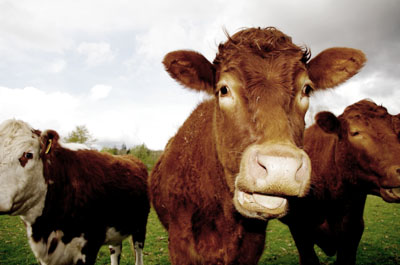BLV is a retrovirus which causes enzootic bovine leukosis (EBL). Most infections with BLV are subclinical, but a proportion of adult cattle develop persistent lymphocytosis, and eventually lymphosarcomas (tumours) in various organs. Clinical signs, if present, depend on the organs affected.
BLV is present in blood lymphocytes and in tumour cells as provirus integrated into the DNA of the cell. It is also found in the cellular fraction of various body fluids (e.g. saliva, milk). Natural transmission depends on the transfer of infected cells (e.g. during parturition). Some blood-sucking insects may also transmit the virus mechanically. Artificial transmission occurs, especially by blood-contaminated needles, surgical equipment, gloves used for rectal examinations, etc.
Infection with BLV in cattle gives rise to a persistent antibody response. Antibodies can first be detected 3-16 weeks after infection. They are present in both serum and milk. Maternally derived antibodies may take up to 6 or 7 months to disappear. The antibodies most readily detected are those directed towards the envelope glycoprotein gp51 of the virus.
Routine diagnosis of BLV infection is based on the detection of specific antibodies. Serological testing is used in certification programs, eradication programs and for commercial exchanges.
This kit is based on an immunoenzymatic assay for the detection of antibodies against bovine leukemia virus (BLV) in bovine serum and milk.




